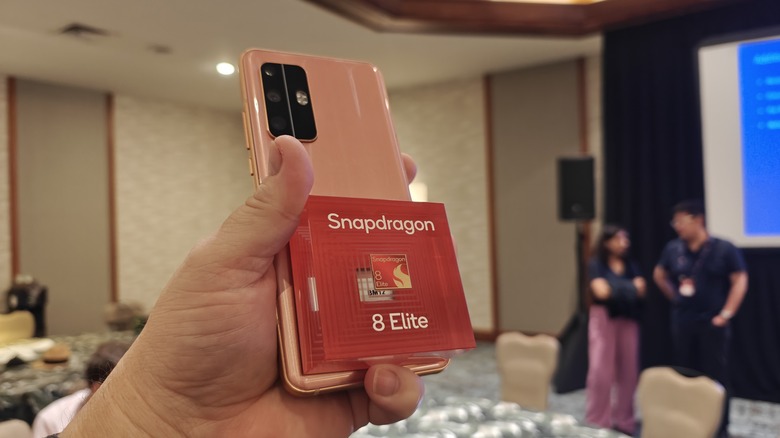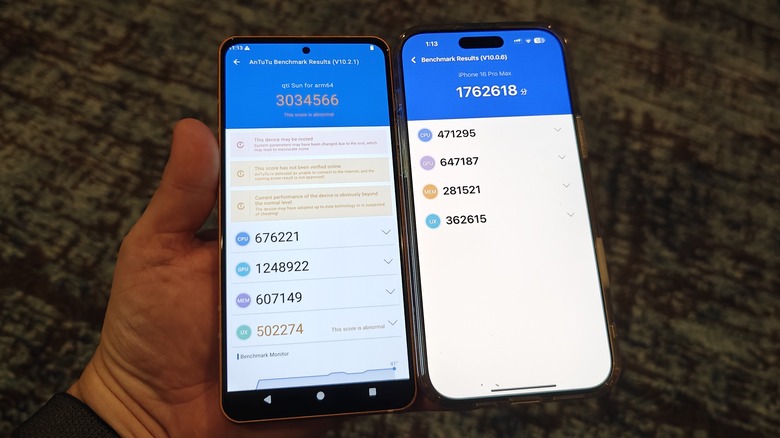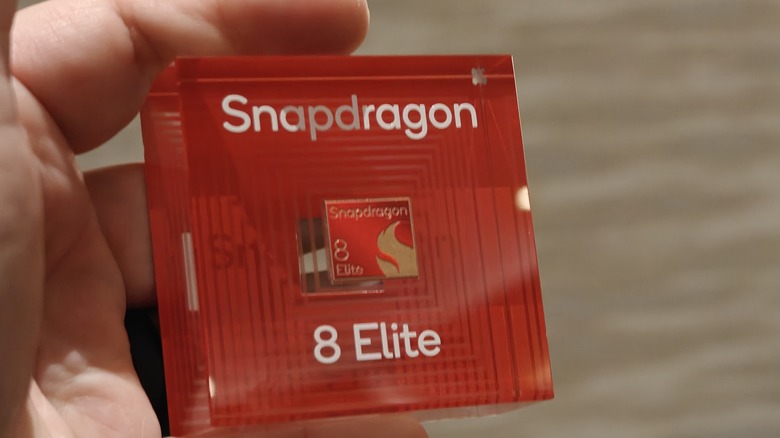Qualcomm Got Me Excited About The Future Of Android, But One Thing Still Bothers Me
Qualcomm flew me out to Snapdragon Summit in Maui this year so it could showcase its latest flagship processor for Android phones — the Snapdragon 8 Elite. This replaces the Snapdragon 8 Gen 3 from last year, and you can count on it to power most of the flagship smartphones in the coming year. In fact, Honor, Xiaomi, and Asus have all already announced phones coming before the holidays. If you want to get in on the action, you'll have opportunities.
What's new to the Snapdragon 8 Elite is the fact that it's built on Qualcomm's Gen 2 Oryon CPU — the next-generation foundation for the Snapdragon X computing processors that the company announced last year and debuted this year. First came the Snapdragon X Elite laptops in June, followed by the Snapdragon X Plus laptops in September at IFA. What we learned about Oryon from those PCs is that you can get really great processing power and also really great battery life in slim form factors, like the Samsung Galaxy Book4 Edge.
So, now that same technology — well, similar technology anyway — is coming to your smartphone, and boy does it seem like it can make a splash. But there's still a pretty big gap that concerns me.
Ultimate cosmic power
The Snapdragon 8 Elite SoC is built using the Oryon CPU, redesigned for mobile. Obviously mobile is a smaller form factor with a smaller battery, and oh, by the way, it's a phone. But the fundamental foundation is there. If you're into it, here's a nerdy paragraph for you.
The Snapdragon 8 Elite — which sounds like "Snapdragon Italy" when you say it fast — uses eight cores. There are two prime cores that run at 4.32GHz and six performance cores that run at 3.53GHz. If you're knowledgeable, you might notice that there are no efficiency cores in this setup.
Qualcomm says that they don't need them because the performance cores can run the gamut between low-power computing and more "normal" computing. Plus, keeping all those processes in the performance cores is actually more efficient since there's no switching based on task. Also, according to Qualcomm, there are no performance or thermal issues due to eschewing the efficiency cores. Put simply, they don't need them. Sounds great, but as always, the proof will be in the pudding, once reviews start to drop from the upcoming phones.
Qualcomm brought the receipts
As a result of all this, the Snapdragon 8 Elite burns through benchmarks like nobody's business. Here are some more statistics. Qualcomm brought a reference device that was running the Snapdragon 8 Elite, 24GB of LPDDR5x RAM, and 1TB of UFS 4.0 storage — not a subtle device, to be sure, but still. I ran Geekbench's CPU test, 3D Mark's Wild Life Extreme test, and Antutu's V10.0.6 test on the iPhone 16 Pro Max and the reference device, and, dear reader, the results were not close.
On Geekbench, the single-core score is the only score that favored Apple. Apple scored a 3419 vs. Qualcomm's 3217. Multi-core scores were not close. Qualcomm scored a 10,432 score compared to the iPhone's 8,461. 3DMark and Antutu were similarly not kind as the QRD (Qualcomm reference device) scored 7,120 and 3,034,566, respectively, against Apple's 4,491 and 1,762,618.
Of course, benchmarks are not the final word. The real proof will come when we test phones running this processor later this year or early next year. Personally, I'm very interested in sustained performance testing and how the processor can deal with the heat. But that's not the only question mark.
Qualcomm talked about AI a lot
Just like last year, AI was front and center of every keynote, Q&A session, and roundtable discussion, and Qualcomm has a point. This is 2024, and if you're not fixated on AI, do you even know how to processor, bro? In all seriousness, Qualcomm brought a few demos to the table, and they all had a common thread.
First and foremost, we need to talk about the puppies. Qualcomm developed an AI-powered burst mode that allows you to take an action shot of your pooch (or your kitty, not judging), and it will use AI to identify the best image of the series and give you sliders so you can turn down the motion blur and use a generative fill to tighten up your dog's fur and present you with a beautiful puppy shot. To demonstrate this, Qualcomm brought in some adoptable dogs from a local shelter to showcase this ability. The main feature was a Golden Retriever Mix named Remy, who is obsessed with tennis balls. There were also several other puppies to play with, including a litter of six-week-old puppies that you could hold and love, and if Qualcomm said anything after that, I wasn't paying attention anymore.
Anyway, Qualcomm also featured a couple of other tricks like video object eraser, which was able to remove my hat which was thrown at me while walking along, and object keeper, which allows you to lock onto a subject and capture photos without anyone else in the background — a sort of preemptive magic eraser.
Not really anything new
Aside from the puppy feature — Qualcomm, more of that, please — none of the features Qualcomm showcased were really new. The company has been talking about AI for over two years now, and it doesn't feel like the company has really pushed the envelope in this category.
Of course, it's important to acknowledge that Qualcomm is really just the base layer in a phone. There are a lot of other fingers in that pie, so it's not necessarily Qualcomm's responsibility to push AI forward, especially since phone makers are under absolutely no obligation to actually use any of those features or even acknowledge that Qualcomm made them (and the phone maker didn't just rebrand it and stick their own UI layer on top).
But still, for a company that talks as obsessively about AI as Remy plays with his tennis ball, I would have expected something new and unique and fun. Instead, they're retreads of capabilities that are already out there.
But I'm still excited
All that being said, boy, oh boy, that processor is fast, and that's a great thing. It seems Qualcomm is keeping its word about bringing the fastest, most capable processors to laptops, phones, and tablets. There's still one unicorn out there that Qualcomm needs to catch up to, and that's the M4 iPad. If Qualcomm wants to dominate all the mobile spaces, it needs to account for all the players.
That being said, the next generation of flagship phones are in good hands. You will not be disappointed by the performance of what's coming down the pipe in just a few weeks. Qualcomm upped its mobile game quite a bit this time around, and it has been teasing even more to come next year. But don't wait; these processors are capable of some remarkable power, and I, for one, can't wait to put them through their paces.





